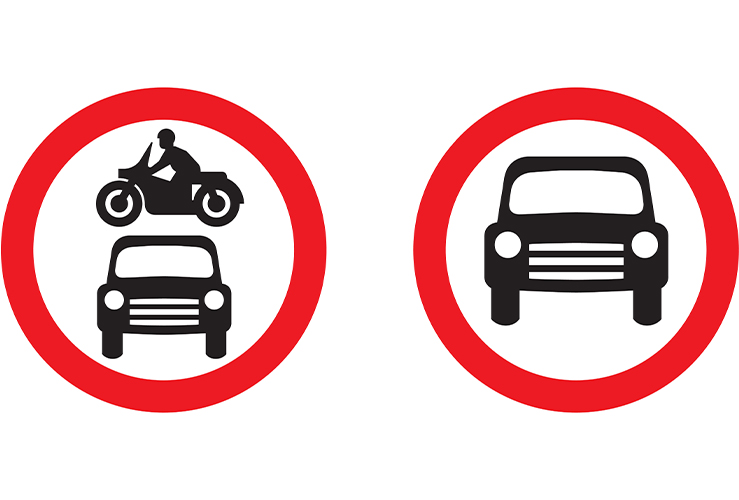-
• #1677
Poorly signalled? I reckon there were a ton of leaflets, official announcements, upteen threads on next door and some fuxking explicit signs.
If you can't see a planter/ no motor vehicle sign I have no sympathy.
-
• #1678
ALL modal filters have these signs:

Maybe roads leading up to them dont have signs in some cases but why does a local authority owe it to drivers to help reroute their journeys through residential roads?
-
• #1679
In Islington there are an abundance of yellow advice signs warning drivers of restrictions ahead. Chances of drivers paying attention? Very little. Fuck em.
-
• #1680
1 meter high 2m long planters covered in signs are pretty obvious.
Someone has painted over the signs to try to get off the ticket. Whilst I was there a Mini drove through the restriction, they were confused because the signage has been vandalised. -
• #1681
I wouldn't say the signing is always very clear. In my area, for instance, we have some pretty long streets, e.g. Reighton Road E5, and the only sign at the unfiltered end is quite small and not a regular traffic sign, but one with writing on it informing of the fact that the street is filtered. (There's no up-to-date StreetView to show it.) Obviously, that's not an excuse for driving through the filter itself, but the signage is certainly inadequate for preventing driving through camera-enforced filters that are permeable for drivers.
Equally obviously, vandalising traffic signs does not change the underlying traffic order. I think highway authorities have a duty to quickly replace vandalised signs, but there may be a grey area of a short period during which traffic orders whose signs are vandalised may not be enforceable. I don't know how the law works there, though.
-
• #1682
Yeah, I don't know--the Traffic Signs Manual only says this:
8.1.2. Over time, signs gradually become faded and their retroreflective properties diminish. This will reduce both conspicuity and legibility by day and by night. Signs also become less effective when they are dirty, damaged or displaced as a result of vehicle impact or vandalism. Damaged or dirty signs also discredit the traffic authority and lessen road users’ respect for the signs. A periodic inspection of signs should be made to ensure their early repair and/or replacement when necessary. After-dark inspections should be made of lit and reflectorised signs, or a retroreflectometer may be used to measure the latter
I'm sure there are clearer rules somewhere, but it's not something I've ever looked into.
What is clear is that, as in the case of the Blackheath filter at South Row, if signs/planters etc. keep getting vandalised, the local authority will most likely tire of having to enforce them.
-
• #1683
fuck em
-
• #1684
Not sure I buy these stats--e.g., I don't really believe that the numbers have changed much between 2018 and 2021, and they're comparing completely different stats here, but whatever. Diversity is good, and it was certainly much lower 20-25 years ago than today.
https://www.standard.co.uk/news/london/tfl-cycling-diversity-improving-london-b963612.html
-
• #1685
Anyone have any resources for opposing road building schemes, specifically once they hit public inquiry phase? Ideally in Scotland, but I suspect the process isn't so different in E&W
-
• #1686
Made the error of getting sucked into reading twitter (via nitter) where there is an abundance of frothy accounts, but enjoying recent announcements by Islington (70% LNs), Fulham clean air neighbourhood, changes to St Paul’s gyratory, etc. and it’s starting to feel like an inflection point.
Aside from not feeding the trolls on twatter, what other easy things can I do? join an organisation, like LCC(?) and (3) continue to engage tfl consultations. Anything else?
-
• #1687
Did lol
1 Attachment
 Backstop
Backstop amey
amey Dibble
Dibble Oliver Schick
Oliver Schick rwn
rwn spinnnout
spinnnout rhb
rhb
The biggest gripe I have with the LTNs is how poorly signalled at least some are. Dulwich for example.
Of course drivers will oppose LTNs if they get hit with a fine for driving through an LTN that they never saw.